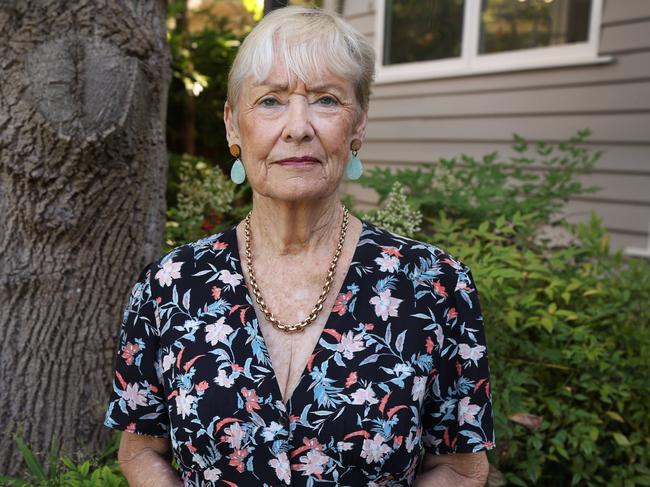Blood test brings massive hope for melanoma treatment
A world-first blood test that detects melanoma before it’s even visible on the skin could be a gamechanger in Australia. See how soon you could get it.
Victoria
Don't miss out on the headlines from Victoria. Followed categories will be added to My News.
A life-saving world-first blood test that detects melanoma before it’s visible on the skin could be available in months.
The Australian technology would mean the cancer can be detected before it appears and has been described as a “breakthrough” by Australian Clinical Labs.
The test, which measures biomarker for cancer, could be offered to patients within six months if approved by the regulator.
Many die because melanoma is not detected early, with the Melbourne pathology company behind the test saying it could make a “massive difference”.
The test will pave the way for earlier, life-saving diagnoses for skin cancer, which kills one Australian every six hours.
The technology behind the breakthrough can also be used to test the skin cells of visible lesions, uncovering crucial and previously unavailable information about the cancer and therefore its best treatment.
Patients will be able to access that version of the test as of now, with the leading pathology provider ACL and the test’s inventor Geneseq Biosciences set to announce on Monday the regulator has approved their technology for solid tissue tests.

ACL clinical pathology national director Associate Professor Chris Barnes said he expected the blood test would be approved and available soon as well.
“We’re pretty excited this is going to make a difference pretty quickly,” he said.
“This isn’t something that is years away, this is going to happen in 2025.”
Australia is the world’s melanoma capital, recording 17,000 diagnoses every year and four deaths per day.
Despite this, Professor Barnes said melanoma was very curable – if caught early and removed – but the diagnosis pathway was “fraught” with “problems”, because it relied on someone noticing a lesion, that can be biopsied.
“That’s where this technology is really a genuine breakthrough technology,” he said.
“(It) has the capacity to make the very early diagnosis of melanoma.”
He said the test, called Melaseq, could detect changes in the pattern of “messages”, called micro RNA, sent between our cells when a melanoma was present “very early on”.
“These are like switches that turn either cancer genes on or off,” he said.

He said they could be found in both skin tissue and blood, and were “the best biomarker” for detecting melanoma.
“In our opinion … this is in a different field in terms of objectivity,” he said.
ACL said the test had a 97 per cent accuracy rate when determining between benign or early state melanomas, and more advanced melanomas.
Prof Barnes said they were not suggesting the Melaseq blood test be used as a population-wide screening tool, but it could be targeted to high-risk individuals.
“A delayed or late diagnosis … that’s where this can make a massive difference,” he said.
He said the Melaseq solid tissue test would also not only help clinicians identify the best, personalised treatment for patients, but also if treatment was necessary – revealing a proportion of lesions were “really very difficult to diagnose”.
“The solid tissue test will be able to provide additional information to make the pathologist more certain that it is, or isn’t melanoma,” he said.
He said, once the laboratory receives the sample, it can be processed within a few days and could spare patients from unnecessarily procedures on very visible parts of their face or body.
“We certainly know of cases where patients have received inappropriately extensive treatment for a lesion that didn’t need it, and the reverse is definitely true,” he said.

The solid tissue test would be done alongside, and not replace, the traditional diagnosis methods, which sees clinicians and pathologists visually examine skin tissue and its cell structure, and can be done the same small piece of skin.
Both tests are still being finalised but they are not currently covered by the government, meaning they will be out of reach for patients who cannot pay between approximately $1200 to $1500.
Melanoma patient Sandra Weine, 77, said the blood test was an “incredible breakthrough” for her children, grandchildren and future generations.
Mrs Weine had always got any suspicious spots checked, and had several removed, but they were never found to be melanoma.
That’s why she was so surprised when, three years ago, her neck began to swell and doctors said melanoma – whose original site was never found – had spread to her lymph nodes.
“Had this test been available … it would have been an absolute life-changer for me,” she said.
At a glance
• Melanoma is the third most common cancer in Australia
• There are almost 17,000 diagnoses every year
• Melanoma is the most common cancer for Australians aged 20-39
• 90 per cent of melanomas can be cured by surgery if caught early
• Yet one Australian dies from melanoma every 6 hours
• It is estimated 1300 Australians will die from melanoma this year
Source: Melanoma Institute Australia


